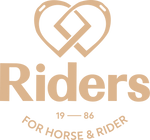It’s a new year and that means Riding schools in South Africa are opening their doors again for lessons. That means it’s time to get your child’s riding gear sorted. At this point, you may be asking yourself “what do I even need to get for my child’s first riding lesson?”. We are here to help.
Whether your child is just starting out with their first horse riding lessons, or they have been at it for a few years, there are a few things that should be on your checklist this January to make sure you and your aspiring young rider are properly prepared. This list should help you find what you need to get your child ready for riding school adventure.
The essentials:
These are the things your child should never go without when they go riding.
A helmet with a VG1 (European) safety standard.
Safety while riding should be your top priority – which is why it’s important to make sure you find your child with the correct riding helmet. We recommend choosing a helmet that has a VG1 safety standard. These helmets have been tested for a variety of different falls and impacts and will provide only the best protection while riding. Always make sure to try on the helmet before purchasing, as an incorrectly fitted helmet will not protect your head in a fall off your horse or pony. If you are not sure how to fit a riding helmet, we are happy to help you.
GOOD TO KNOW: Helmets should be replaced after 5 years or after a fall where you have hit your head.
A riding boot with a distinct heel.
A good pair of riding boots is an important part of your child’s riding gear. Even during beginner riding lessons, accidents can happen, and you don’t want your child becoming stuck in the stirrup and dragged. Riding boots have a taller heel than everyday shoes, which helps to keep your child’s feet from slipping and getting caught in the stirrup. As an added benefit, Riding boots have a reinforced toe that will help protect tiny feet from being trod on by a well-meaning schoolmaster.
Basic Riding jodphurs or breeches.
At the early stages, you do not need anything fancy, but a basic pair of jods is always a good idea.
Sitting on a horse takes a bit of getting used to, and proper pants can help you to avoid a lot of discomfort.
Riding in regular pants, like jeans, often causes uncomfortable chafing after riding along the legs and seat due to the position of the seams, and improper materials. Jodhpurs are designed with horse riding in mind, and have the seams set where they do not cause chafing and discomfort, meaning they can make a huge difference in whether your child will enjoy horse riding. Additionally, they are also reinforced to stand up against the stress placed on the material by riding, which regular pants are not – meaning they will most likely last you longer too.
The Nice to haves:
If you are a tighter budget, or if you child is just trying out riding for the first time and you are not sure if they will stick with it, these are some things that are great to have, but are not going to compromise your child’s safety if they are missing.
Gloves with a reinforced palm.
Reinforced riding gloves are designed to give you extra grip on the reins and help to prevent chafing your hands while horse riding. While gloves are not strictly essential, they will help to make the riding experience easier and more comfortable on your Childs hands while they get used to how to hold the reins, especially when they might be dealing hungry pony trying to slip the reins to get a tasty nibble of grass in between the lesson.
Chaps or gaiters
Chaps and gaiters can help to stabilise and support the leg while riding and help to provide a little extra grip while in the saddle. Unless your child’s riding teacher has expressly requested that you get chaps or gaiters, you most likely do not need them, as they can also easily be a crutch while developing a strong leg position in the early stages of riding. In this case it is best to chat to your riding school to find out what they recommend beforehand.
A jumping crop (for jumping) or a dressage whip for flatwork.
While this might seem to be a staple of equestrian gear, it is unlikely that you will need a crop in the early stages of horse riding. That being said, it is a useful riding aid and helps to limit excessive kicking from young riders when their pony won’t move forward – better for both horse and rider. We suggest you talk to your riding school about whether they think you will need a riding crop, as they know their ponies best. Always be sure to use your crops and whips responsible, and seek advice if you don’t know about proper, safe usage.
Horse Treats or Carrots
Taking some time to bond with the school ponies after a ride is a rewarding experience and will help your child to learn to love, respect and appreciate horses. A treat or carrot for after your lesson is a great way to say thank you to your hard-working school pony after a long lesson, and is always appreciated, although not strictly necessary.
Honourable Mention:
While it’s not strictly riding equipment, never forget to generously apply sunscreen before a riding lesson! Most riding arenas are open to the sun, and that means your child is at risk of getting a nasty sunburn if you don’t take meaures to protect them. Alternatively, you could also consider a long sleeve UV protective shirt, or sun sleeves.
We hope you found this list helpful and wish you all the best on your riding adventures this year!


